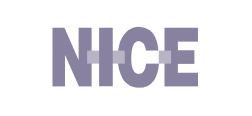1) Ditch the jargon
Even if your audience includes PhDs or MDs, your deck isn’t a journal article.
Remember that most investors aren’t scientists - they want to understand the science well enough to believe in it.
Use plain language wherever possible. If you must use acronyms or technical terms, define them clearly the first time. Simplicity builds trust.
2) Connect the science to a clear business case
Yes, your science may be breakthrough - but investors want to know: Is this a viable business? That means talking about market potential, commercialization strategy, and how you’ll make money.
Even if revenue is years away, walk them through the steps to get there. Science is only part of the equation.
3) Show your path to de-risking
Biotech is capital-intensive and slow to scale, especially early on. Show what progress you’ve made, what’s coming next, and how this raise will help you hit key inflection points.
Outline your funding roadmap and tie your use of funds to real milestones. The more clearly you show traction, the lower the perceived risk.
4) Map your pipeline with milestones
Timelines are everything in biotech. Show exactly where you are in the pipeline (preclinical, Phase I, etc.) and what you need to hit the next milestone.
Use of funds should directly tie into that: what will this raise unlock? When’s the next inflection point?
5) Prove you can defend your edge
Investors want to know your science can’t easily be copied. Spell out your IP position - filed or granted patents, licensing rights, exclusivity windows, or trade secrets.
Don’t stop at patents alone - include regulatory advantages or any technical moat that’s hard to replicate.
6) Show you understand your market access
Biotech VCs care deeply about addressable market size, reimbursement dynamics, and where your solution fits in the clinical landscape.
Don’t just say “$10B market.” Break down what part of that is realistically accessible, who pays, how reimbursement works, and what would unlock market adoption.
7) Add external validation wherever possible
Early biotech is all about credibility.
Back up your claims with third-party validation - clinical trial results, peer-reviewed papers, KOL endorsements, grants, or partnerships. Even better if a former FDA reviewer or big-pharma heavyweight backs you or sits on your board.
8) Be transparent about risks
Biotech is risky - it comes with long timelines, regulatory hurdles, and binary outcomes.
The best decks acknowledge that reality and show how you're mitigating the risk: diversifying the pipeline, bringing in top advisors, or focusing on fast-to-market indications.








